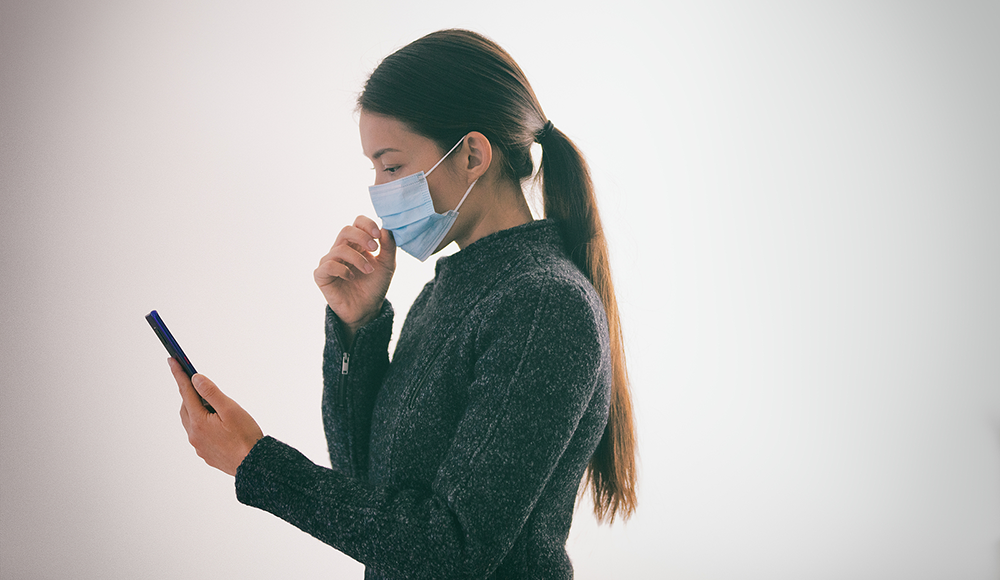3 Reopening Lessons HR Leaders Can Learn From College COVID Outbreaks

College campuses are becoming the newest hot spots for COVID-19 outbreaks. While some argue about who gets the blame — students, administrators, or conflicting public health guidelines — there are valuable lessons any organization can learn from the experiences of American schools when it comes to reopening and avoiding heavy liabilities.
(This article is not meant to serve as legal advice, but as business advice based on my experience working with state and government agencies to create plans to track COVID-19 to ensure the safest possible reopenings.)
Lesson No. 1: COVID Increases Your Liability, So Assess Risk Accordingly
Several students have already sued universities for charging full tuition for online classes. There will undoubtedly be more lawsuits to follow, but instead of being sparked by the quality or price of a distanced education, they will likely be driven by the health and safety measures applied on campus.
Employers should also expect to face new liabilities as they reopen. Can an employee sue their employer if they are exposed to or infected by COVID-19 at work? What responsibilities do employers have when it comes to keeping employees safe?
Debra Turner, corporate counsel with Avalon Health Care and an attorney who has advised many businesses throughout the pandemic, says employers face conflicting liabilities in reopening their businesses.
“Employers must take confidentiality of employees’ medical information extremely seriously,” Turner says. “The Americans with Disabilities Act requires employers to maintain all information about an employee’s positive COVID-19 test as a confidential medical record. At the same time, the Occupational Safety and Health Act requires employers to provide a safe workplace that is free from recognized hazards. States are also now passing laws that require employers to notify employees of exposure. To do this, employers should implement processes that involve contract tracing and quickly alerting individuals of potential exposure to COVID-19 while maintaining confidentiality of the infected employee’s identity. This can get really tricky.”
HR executives in every industry need to assess the risks inherent in their unique workspaces. Open offices, for example, pose different risks than private offices; employees who have regular interactions with customers are also at increased risk. Once they have taken the risks into account, HR leaders must create rigorous plans to mitigate these specific risks as much as possible.
Lesson No. 2: COVID Changes Your Responsibilities
Some university presidents are saying COVID could change higher education for good. The pandemic may have similar ramifications at work, and understanding the changes brought on by COVID can help businesses divide new responsibilities among their various teams.
For instance, IT departments and HR departments may find themselves working together to implement technology solutions to track outbreaks and alert those who have potentially been exposed. What’s more, these teams may find themselves trying to create turnkey solutions that meet the unique needs of their own offices.
Kim Wittman, vice president of HR at Vivint Smart Home, explains it this way: “COVID-19 has changed the way so many people work, and HR leaders are having to think about their work differently — including guiding leaders on building culture in a virtual world, implementing more robust online training programs, reinventing the way we hire and onboard new employees, and figuring out how to restructure an office to maintain social distancing and other health guidelines.”
With increased responsibility comes more stress and pressure to get it “right,” even when there is no existing rule book. Employees, HR teams, and C-level executives will need to work together to take on new roles and create safe paths forward for their businesses.
Lesson No. 3: COVID Raises the Bar for the Technology Measures We Need to Track Infections and Keep People Safe
College reopening strategies are under serious scrutiny. Experts have found that many of the US’s top outbreaks can be tied to colleges, and that even the most cautious schools are seeing outbreaks. With that in mind, it’s no wonder businesses are grappling with questions about how and when to reopen safely.
“So many of my colleagues are anxious to get back into the office, but they’re afraid to do so without the proper safeguards in place,” says Carlee Brennan, people and projects manager at Blyncsy. “We’ve seen colleges and states consistently struggle to track and contain outbreaks; our businesses need to have much better systems in place to reopen safely.”
Many schools have struggled with contact tracing in particular as they have reopened. Health departments in some college counties have been overwhelmed by manual contact tracing, as it can take hours of work per infected person, making it extremely hard to do at scale.
Many universities have turned to app- or tech-based strategies in the hopes that doing so would help them alleviate the burden of manual contact tracing. However, some schools faced pushback on the grounds that their COVID-tracking plans infringed on student privacy. Meanwhile, experts have criticized the overall effectiveness of COVID-tracking apps due to adoption issues.
If businesses want to avoid the mistakes colleges have made, they must invest in scalable contact-tracing solutions with widespread adoption that do not infringe on privacy. For example, some schools have turned to a Wi-Fi-based approach that promises to track students anonymously and voluntarily. When this approach is paired with technology that can automatically alert people who have been exposed to COVID and flag potential breaches of quarantine, businesses and schools may finally have the technology they need to reopen safely.
Mark Pittman is the CEO and founder of Blyncsy.

